What is Off-page SEO?
Off-page SEO (search engine optimization) refers to efforts to improve your website’s organic ranking in search engines without making changes to the website itself. This often includes strategies such as link building, guest blogging, and social media promotion.
The main goal of off-page SEO is to make your website more credible and authoritative to search engines and users.
It is an integral part of a successful SEO strategy.
Notes: Off-page SEO is sometimes referred to as off-page SEO or off-page optimization.
Why Is Off-page SEO So Important?
Importance of off-page SEO
Off-page SEO is important because it shows search engines that your website is important to web users.
Each link you receive is an endorsement of your website by another source, indicating that your website is high quality. This makes external links a key factor in SEO quality among similar websites, which helps search engines determine how to rank your website in the search results page (SERP).
A website with off-page SEO is able to improve its ranking in search engines through backlinks, mentions, and social media promotion.
For example, when we compare two wedding websites with similar content, which one will rank higher?
If multiple websites use similar on-page SEO strategies, then off-page SEO signals can help determine which website has a better ranking advantage in search results.
Search engines like Google evaluate external SEO factors, such as the number and quality of backlinks to a website.
If one wedding website has more backlinks from reliable sources, and another website has no online mentions, the website with more backlinks and a better online reputation may rank better.
Search engines use a number of on-site and off-site SEO factors to assess the value of a page to a searcher’s query and return relevant results.
Remember – a page without off-site optimization is like a wedding without invitations, which will ultimately result in a wedding without guests.
On-page SEO vs. Off-page SEO
On-page SEO and off-page SEO are two important parts of a comprehensive SEO strategy. On-page SEO focuses on improving the content, structure, and HTML elements of your website to improve search engine rankings, while off-page SEO focuses on activities outside of your website that are designed to build your website’s authority, credibility, and visibility on the web.
On-page SEO involves technical measures such as keyword optimization, meta tag settings, internal link building, and improving website speed. These methods help search engines crawl and understand your content more easily, resulting in higher rankings. For example, optimizing your title tags and meta descriptions can make your pages more attractive to search engines and users.
Off-page SEO, on the other hand, refers to external means to improve your website’s credibility and authority. This mainly includes obtaining backlinks from authoritative websites, gaining mentions and citations, and also includes leveraging social media platforms to enhance your online presence. For example, when a trusted website links to your content, search engines receive a signal that your website is reliable and relevant, which can help improve your rankings.
While off-page SEO refers to optimization strategies implemented outside of your website, on-page SEO refers to optimization efforts performed within your web pages.
Here’s a quick overview of the strategies used in SEO, both on-page and off-page:

Both on-page and off-page factors are crucial in SEO.
But it’s also important to focus on technical SEO. This includes technical improvements to security, loading speed, and mobile-friendliness across the website, all aimed at improving search engine visibility.
Both on-page and off-page SEO are important for a successful SEO strategy. On-page SEO helps you optimize your website for better search engine performance, while off-page SEO helps improve your website’s authority and reputation, which increases your chances of ranking high in search engine results.
Why Is Off-Site Seo Important For Search Engine Rankings?
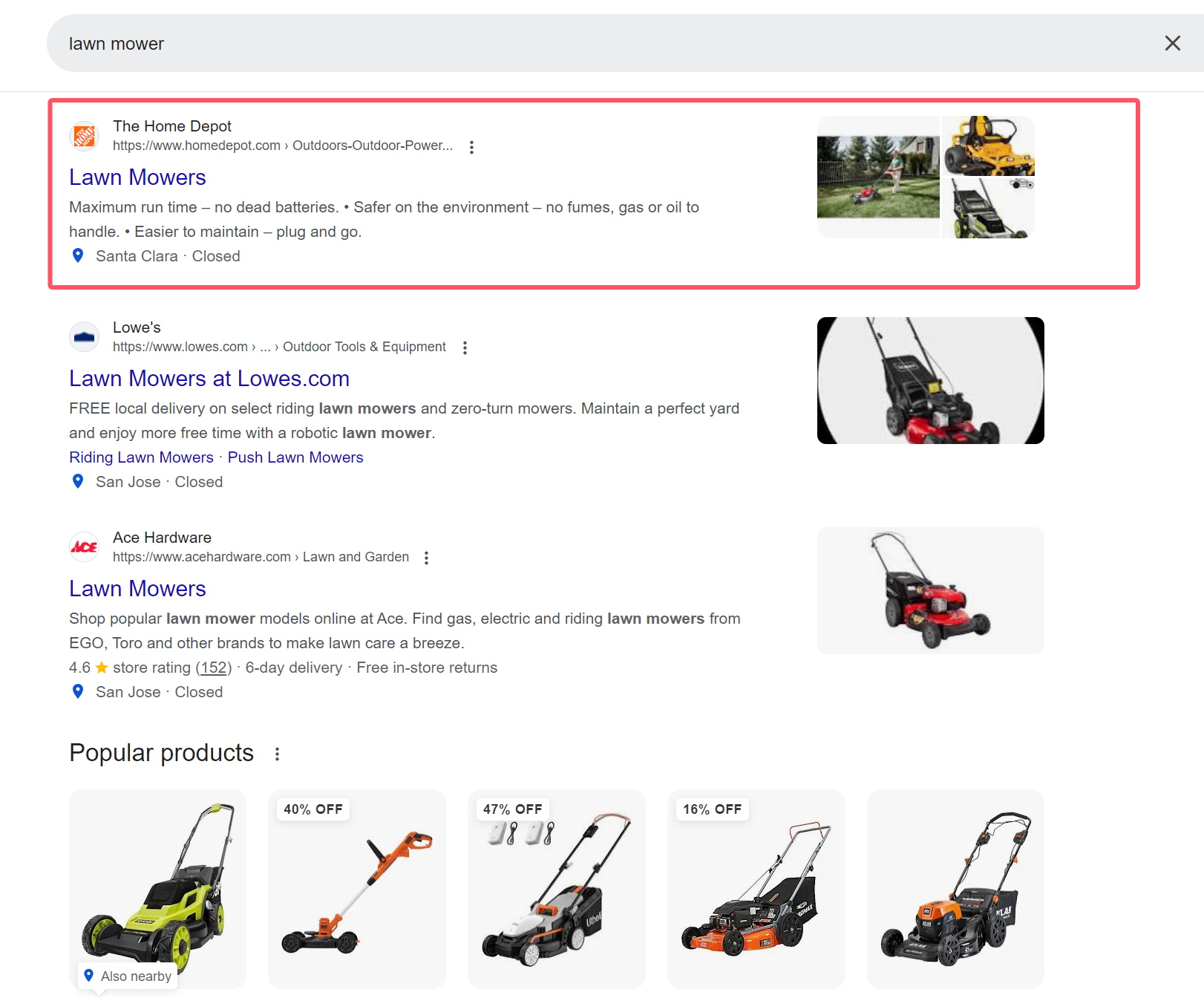
Competition on the Internet is fierce, and your first priority in grabbing the public’s attention is getting your product seen by them. This can be achieved through direct display on search engine results pages (SERPs), or through links or mentions on third-party websites and profiles. Search engines and users get your content through these links and mentions, so these channels are critical.
A well-designed link building strategy is crucial for off-site SEO as it can significantly increase a website’s domain authority and search rankings through effective backlinks.
When a user searches for “Lawn Mower,” search engines like Google and Bing need to determine which results best match the user’s query intent. One way they do this is by evaluating the number of links or citations from authoritative sources associated with each piece of content.
If you use the Moz tool, you can calculate the Domain Authority (DA) of your entire website. This well-known metric predicts a website’s ranking potential in Google using backlinks and other factors. You can also do the same calculation on a single page to estimate page authority (PA). Each search engine has its own algorithm for determining which content is worthy of ranking for a specific query. While these formulas are secret, Google in particular has provided many clues over the years as to what it considers high- and low-quality resources. SEO Research analyzes the following sources and events to get more information about these leads:
- Search Quality Rater Guidelines – Google employs a global network of quality raters whose job is to evaluate whether existing algorithms and experiments are producing relevant results. The detailed guidelines provided by these raters should not be directly considered as ranking factors, but reading through them can reveal many important concepts about Google’s quality, expertise, experience, authority, and trustworthiness. The document repeatedly emphasizes that Google places great importance on the number of links and mentions a page or piece of content receives, which is the main reason why off-site SEOs focus on gaining this exposure.
- Algorithm Updates – Google regularly releases officially confirmed algorithm updates, and you can see an overview of these updates here. Every few months, Google rolls out a core update, and other updates that focus on specific aspects of search are released regularly. By tracking and studying these updates, SEO professionals understand how Google relies on links and citations to understand and rank search results. They also find that when certain behaviors are updated, sites that adopt specific practices will drop in ranking, revealing situations that Google doesn’t like.
- Third-party experiments – Good SEO experts are constantly conducting experiments, research, and surveys to gain insights into how different types of SEO can be used to improve search engine visibility and influence searcher behavior. Many SEO practitioners regularly publish the results of their experiments, and the 7 SEO blog is a good place to start reading this material. When doing your own research, you will quickly realize the importance of acquiring links and citations in off-site SEO, as improvements in these aspects directly affect search engine visibility and public discoverability.
Looking again at the search engine results for “Lawn Mower,” we can reasonably surmise that the best results are usually found on sites that have good links and citations.
And, when we visit related sites, we can see how they share some of their domain and page authority by linking to third-party resources, like this Lawn Mower from The Home Depot:
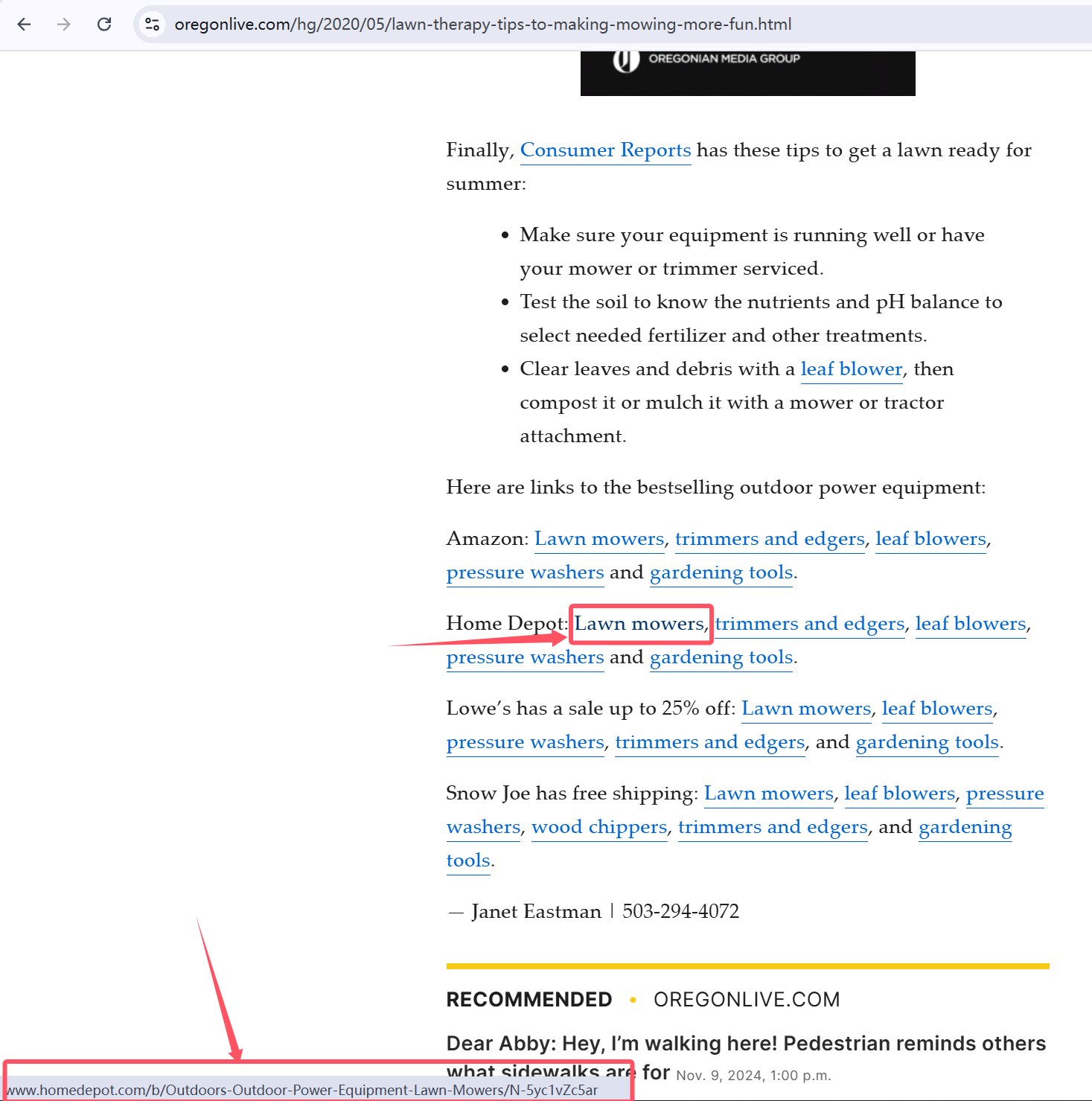
A link from an authoritative site like OregonLive.com to a related resource like The Home Depot’s Lawn Mower has two major benefits for Lawn Mower:
- Through this link, the equity of the lawn mowing tips article page is passed to the Lawn Mower site, which in turn helps Lawn Mower rank well in the search engine results page (SERP) for related keywords.
- Public users are aware of the site’s existence through the mention in the article and may become visitors to their site and customers of their business.
That’s a great explanation of the basic concept of off-site SEO! Next, let’s take a deeper look at how off-site SEO works.
How Does Off-Site Seo Work?
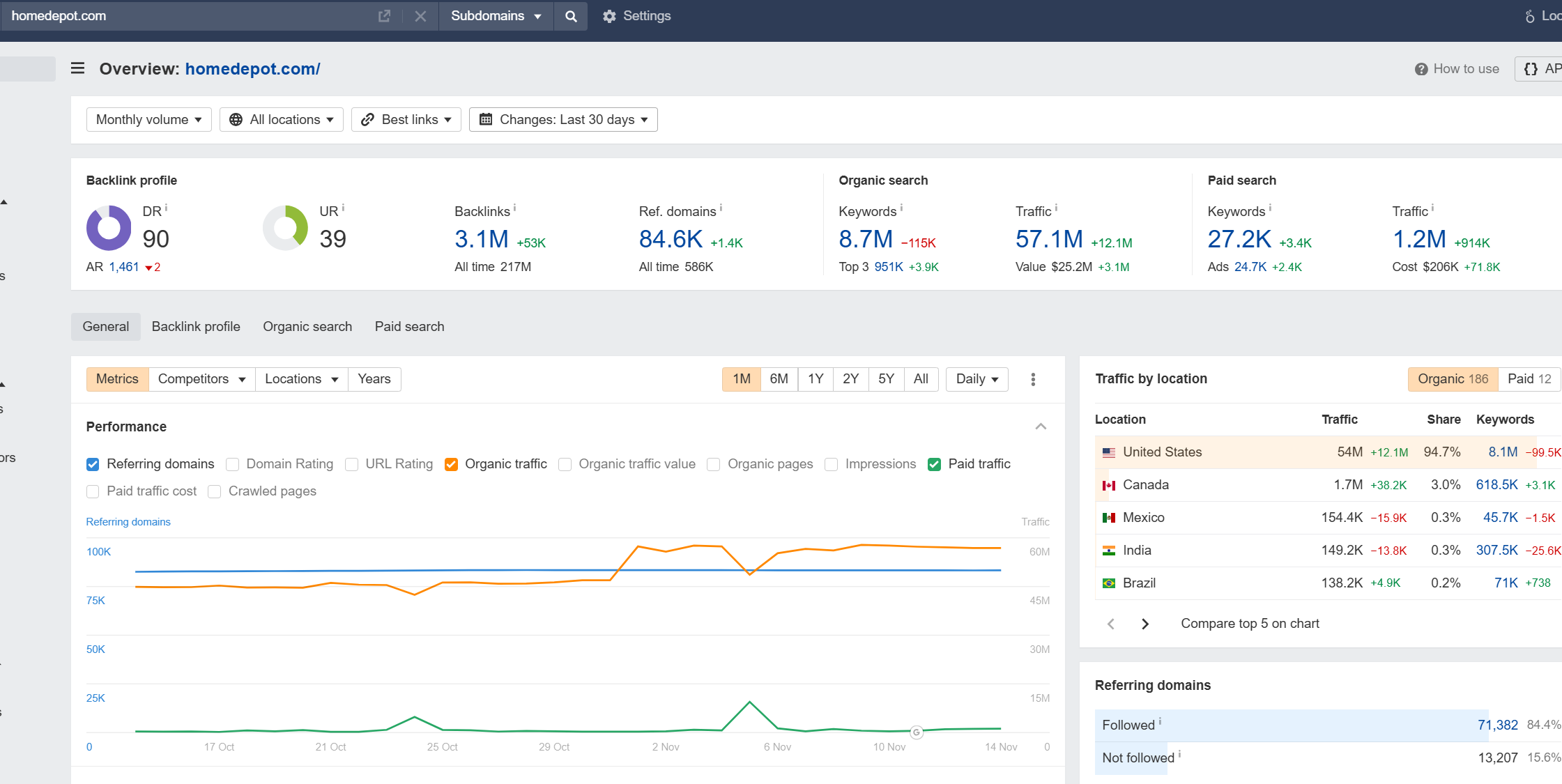
Previously, we speculated that OregonLive might have ranked so well for “Lawn Mower” on Google because of its high authority. However, SEO doesn’t need to rely on guesswork—we can do empirical analysis. By entering the domain into Ahrefs, Moz, and SEMrush’s free Domain Authority Checker, we found that the site has a Domain Authority (DA) of 60, has over 17,000 links from other domains, and ranks well for nearly 190,000 keywords, all while having a spam score of just 1%.
Using tools like Domain Authority Checker, Moz LinkExplorer, and SEMrush Competitor Analysis can help you understand the health of your current link profile, the influence of third-party links to your content, and which sites are linking to your competitors. When it comes to links, there are three scenarios you want to focus on:
- In some cases, the quality of your site’s content or the authority and visibility of the contributors may be so prominent that you can naturally earn external links without actively asking for them.
- In other cases, you can actively earn links to your site by contributing to third-party publications. For example, you can be interviewed by a third-party publisher or contribute a quote or article to them to earn a link through your contribution. You can also publish a traditional digital press release and include a link to your site. In addition, you can sponsor third parties, such as supporting a seminar at a university, to earn links. For local businesses, you can build a series of local business profiles around the local search ecosystem to earn links to your site. Another way is to increase your site’s authority through broken link building, identifying those broken hyperlinks and contacting the site owner to recommend replacing them with links to your relevant content.
- While you should try to earn links from the first two methods, in a competitive market, site owners may need to actively reach out to third parties to improve their domain rating (DA) and page rating (PA) in an effort to earn more links from sites related to the topic and organization. Read the full “Beginner’s Guide to Link Building” to learn about a variety of ways to build relationships with authoritative website owners and write emails and social media posts to create new backlinks. At the same time, gradually improve your brand image over time so that your content posts are crawled faster, fully indexed, and receive better rankings. Guest posting is an effective strategy for building backlinks and brand awareness by creating and publishing content on relevant websites.
Regardless of how you earn links, the links that have the greatest impact on your SEO efforts are generally those that deliver the most value to your content. There are many factors that can positively influence the value that a link delivers, such as:
- The popularity of the linking site
- The relevance of the linking site’s subject matter to the linked site.
- The “freshness” of the link
- The anchor text used in the link to the site
- The reliability of the linking site
- The number of other links on the linked page
- The authority of the linking domain vs. the page
Before you start looking for backlink opportunities, be sure to take the time to understand what Google considers spammy link behavior. To avoid negative reviews, follow Google and Bing’s webmaster guidelines and avoid participating in spammy link tactics such as:
- Buying links – Never pay anyone to link to your site.
- Inserting hidden links to sites you don’t own by exploiting security vulnerabilities.
- Abusing keywords in the anchor text of links you create.
- Participating in large-scale link swaps or link nurturing programs.
Getting Citations Or Mentions
While search engines and search engine optimization (SEO) place a high value on links, earning links is not the only way to improve off-site SEO. Although Google’s John Mueller points out that unlinked brand or content mentions do not convey the same value as links, the Search Quality Raters Guidelines state the following:
For those who publish in their field of expertise, academic credentials, peer recognition, expert co-authorship, and citations can all serve as evidence of a strong reputation.
When your assets are actively mentioned, it is always best practice to try to earn links. However, even when this is not possible, authoritative and relevant publications that mention your name, brand, organization, or business still contribute to search engines’ understanding of your business’s strong reputation.
For example, even if our example OregonLive website only mentions Lawn Mower, but does not link to it, this mention still has a positive impact on the business’s positive reputation and search engine optimization (SEO) strategy. Furthermore, this unlinked mention is not only valuable in the eyes of Google and Bing, it also increases brand awareness and drives traffic to your website.
Brands should actively create local business listings on platforms such as Google, Yelp, Apple Maps, etc. to build structured citations in local business media. At the same time, they should also obtain unstructured citations on blogs, news sites and other third-party platforms. These measures are key to most local brands’ off-site local SEO strategies.
Get Social Attention
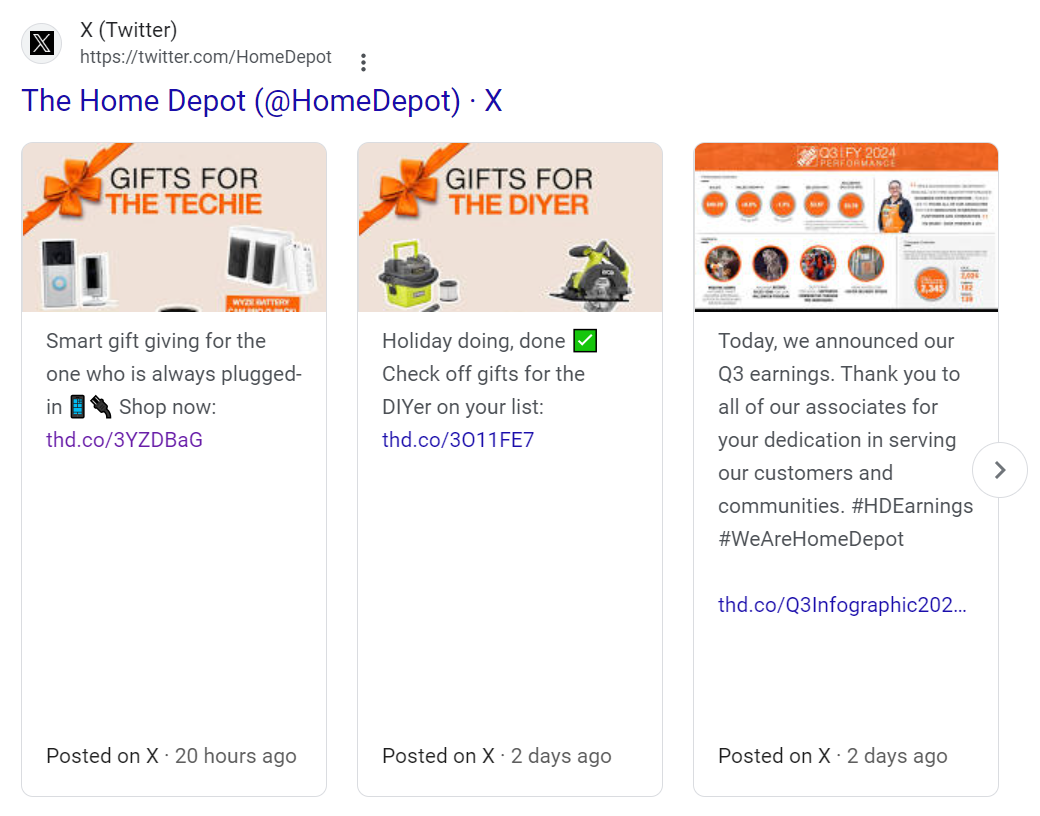
Social media and off-site SEO reinforce each other in many forms.
First, Google will surface the latest tweets from brands and people directly within the organic search results page, such as the home décor brand The Home Depot’s Twitter carousel pictured above. Additionally, Google is allowing local businesses to link directly to social media platforms in their Google Business Profiles.

Of course, when your social media activity is popular and you accumulate a large number of followers, your social accounts will become an important external driver to increase brand awareness and increase website traffic:
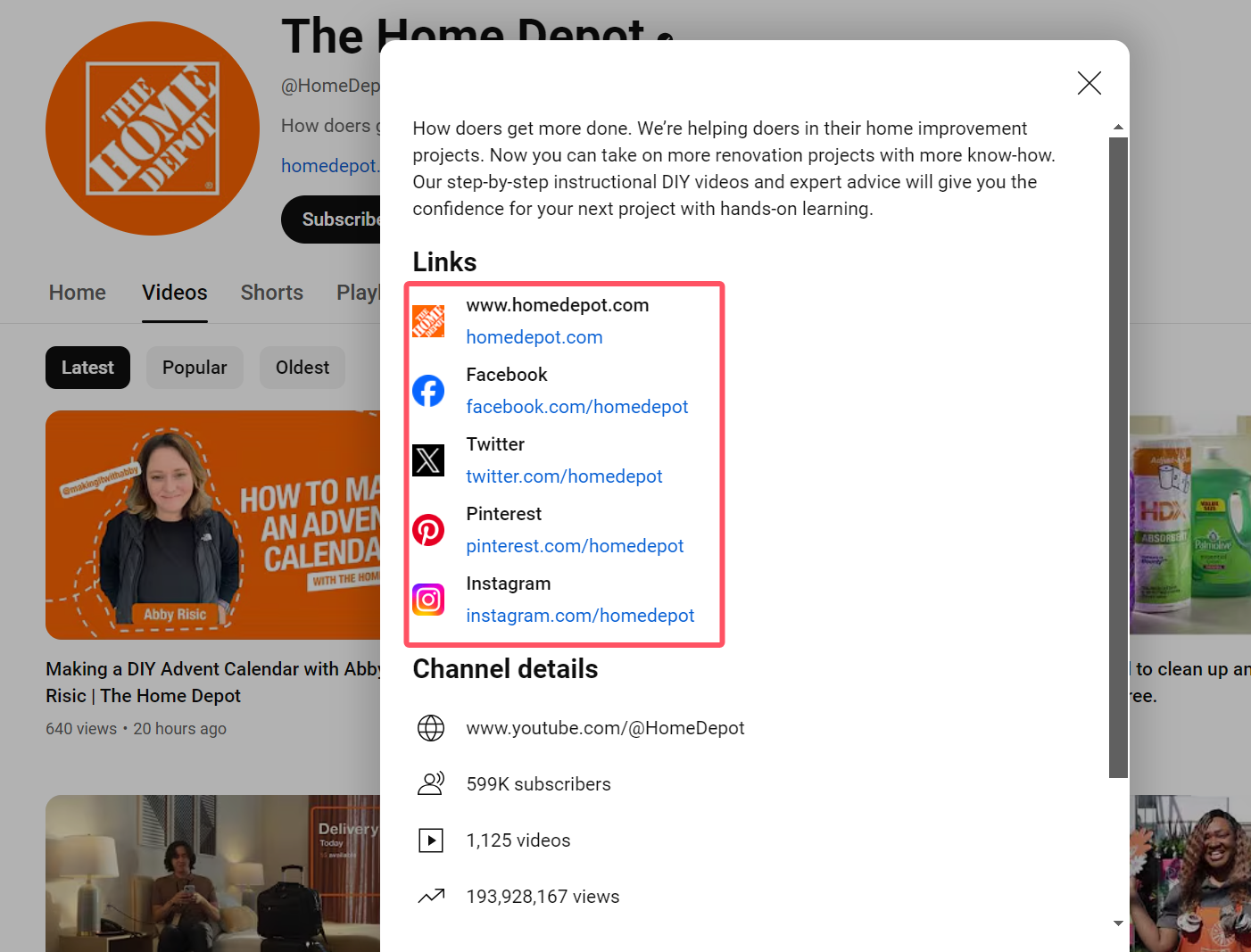
In addition to building links to your own content through social profiles, your off-site SEO performance will increase when influencers (i.e. individuals or brands with widespread social media presence) link to or mention your organization, members, or content. significantly improved.
In this example, The Home Depot, a well-known corporate brand, is investing $10 million to help veterans age well and avoid homelessness. It will help build, renovate and repair hundreds of veteran homes and facilities and provide services to more than 200 veterans. Rent/mortgage relief available to military members. The Home Depot is happy to share with its followers the large-scale charity projects that its company brand has done for society, which shows that they are sharing their influence with loyal users, which may bring more traffic, links and increase brand awareness:

For local brands with brick-and-mortar stores, off-site SEO can also cover offline promotions designed to drive online visibility, traffic, and conversions. In addition, virtual brands may also invest in local advertising to attract more attention to their online products, such as through billboards or local radio and television ads.
Any in-store signage, local promotions, or word-of-mouth marketing that drives online traffic, garners online reviews, or increases social media followers can be considered part of an off-site SEO strategy. In addition, traditional loyalty activities, such as online birthday discounts or online points earned for referring new customers, can also be included in off-site SEO strategies.
How To Implement Off-Site Seo
Off-site SEO may be different for each organization, but the process is applicable in most cases:
- Clarify your goals – Do you want to increase brand awareness, get more links and traffic, rank higher or higher, increase the number of reviews, or do you want visitors to stay on your site longer? Clearly define what you want to achieve so that you can evaluate whether your efforts are successful or whether you need to adjust activities, goals, or expectations.
External SEO techniques such as social media marketing and influencer outreach are important means to increase website authority and visibility:
- Execute tracking – Apply analytics to any trackable part of your activities.
- Identify your resources – Evaluate the content you provide that is worth linking, sharing, or public action.
- Activate your assets – Whether it is publishing a new article, sending link requests via email, promoting yourself as a podcast guest, contacting social media influencers, or displaying a new sign in your store window to solicit feedback, record the start date and specific content of these activities.
- Measure results – Evaluate success at different time points. Some types of off-site SEO may take months or even years to show results. Learn from your experiments and document your successes and subsequent learnings.
6 Effective External SEO Tips
Let’s explore five external strategies that can improve your website’s authority and increase organic (unpaid) search traffic:
1. Link Building
Link building is the process of having other websites link to your website. In search engine optimization (SEO), these links are called backlinks.
The more backlinks a page or domain has, the more authoritative Google considers it. Especially when those backlinks come from domains that are themselves highly authoritative.
Semrush rates a website’s authority through an “authority score.” This score is based on the quality and quantity of backlinks, organic traffic levels, and how organic the website’s overall backlink profile is.
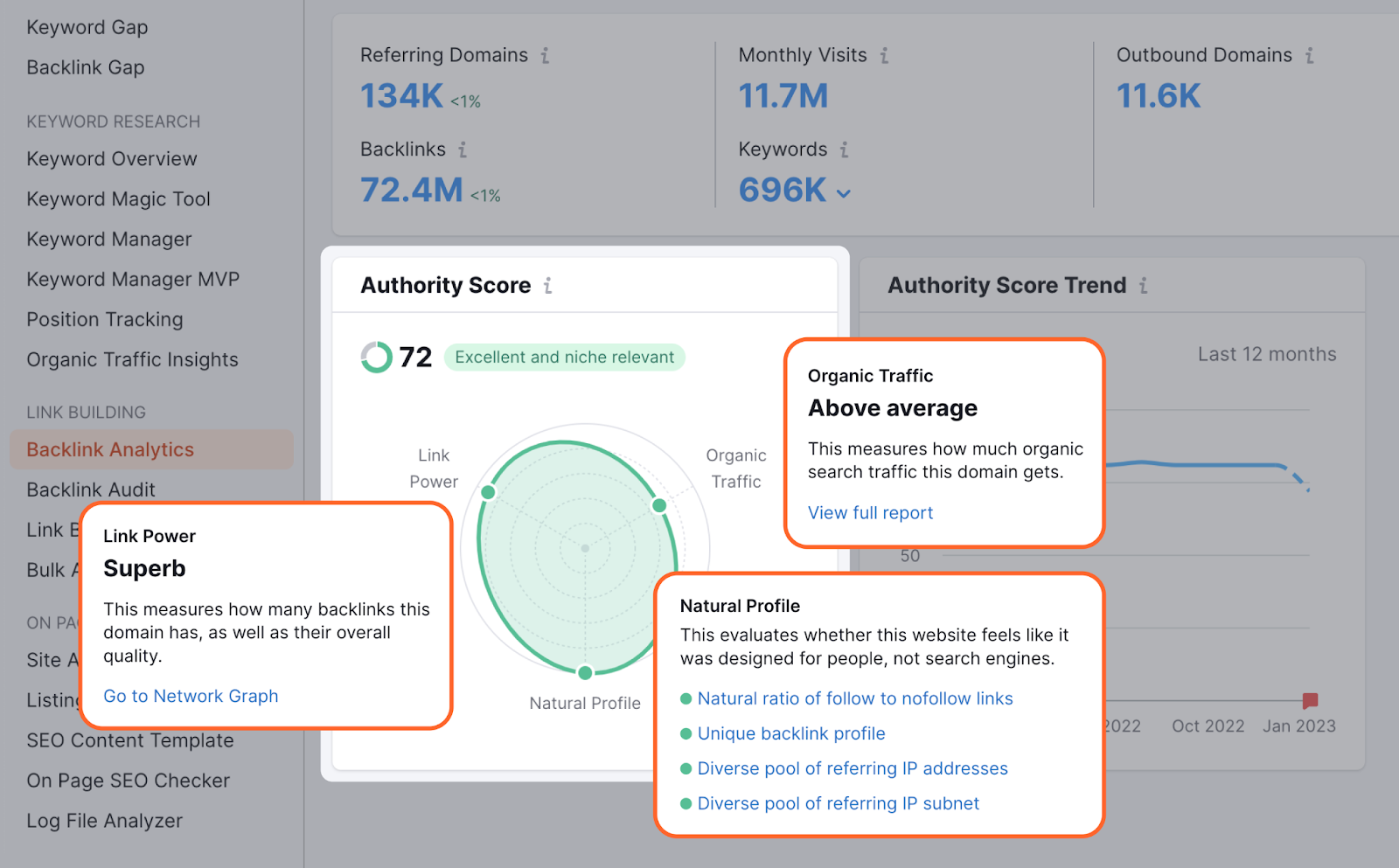
Our 2024 Ranking Factors study showed that the domain authority score is the sixth most important predictor of a page’s ranking position.
In order, the other most critical off-page SEO metrics include:
- Page Authority Score: The authority score of each page.
- Number of Referring IPs (Domains): The number of different IP addresses connected to this domain.
- Number of Referring Domains (Domains): Refers to the number of different source domains that link to this domain.
- Number of Referring IPs (URLs): The total number of different IP addresses that link to this page.
- Number of Referring Domains (URLs): The number of different domains that point to this page.
- Number of Backlinks (Domains): The sum of all backlinks pointing to this domain.
- Number of Backlinks (URLs): The sum of all backlinks pointing to this page.
You can get relevant metrics for almost any website using our backlink analysis tool.
Simply enter your domain name and click the “Analyze” button to get a detailed report like this:
Want To Start Building New Backlinks?
Let’s take a look at a few of the most popular backlink building strategies:
Broken Link Building
Broken link building is the process of finding relevant backlinks that are no longer working and convincing their creators to update the link to point back to your own site.
Let’s say a publication in your industry referenced a competitor’s resource, but that resource has now been removed.
You could contact the publication to let them know that the link is broken and suggest that they link to your version of the resource instead.
One effective way to find broken backlinks is to use a backlink analysis tool.
Simply enter your or a competitor’s domain. Next, go to the “Indexed Pages” tab and use the “Broken Pages” filter.
This will show you URLs that have backlinks but are no longer working.
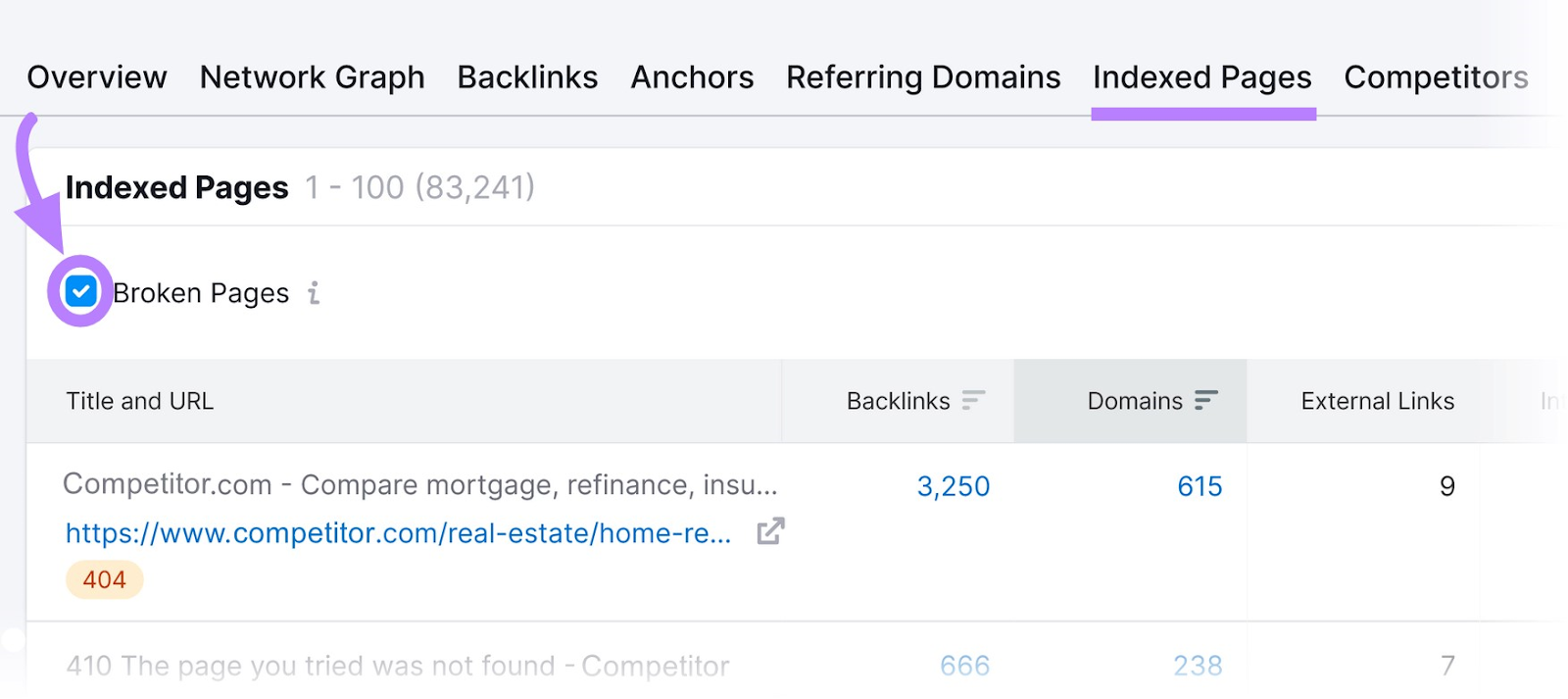
Look for pages that could be good replacements.
Next, click on the “Backlinks” number in the corresponding row to see all the backlinks pointing to that URL. These are the sites you might want to contact.
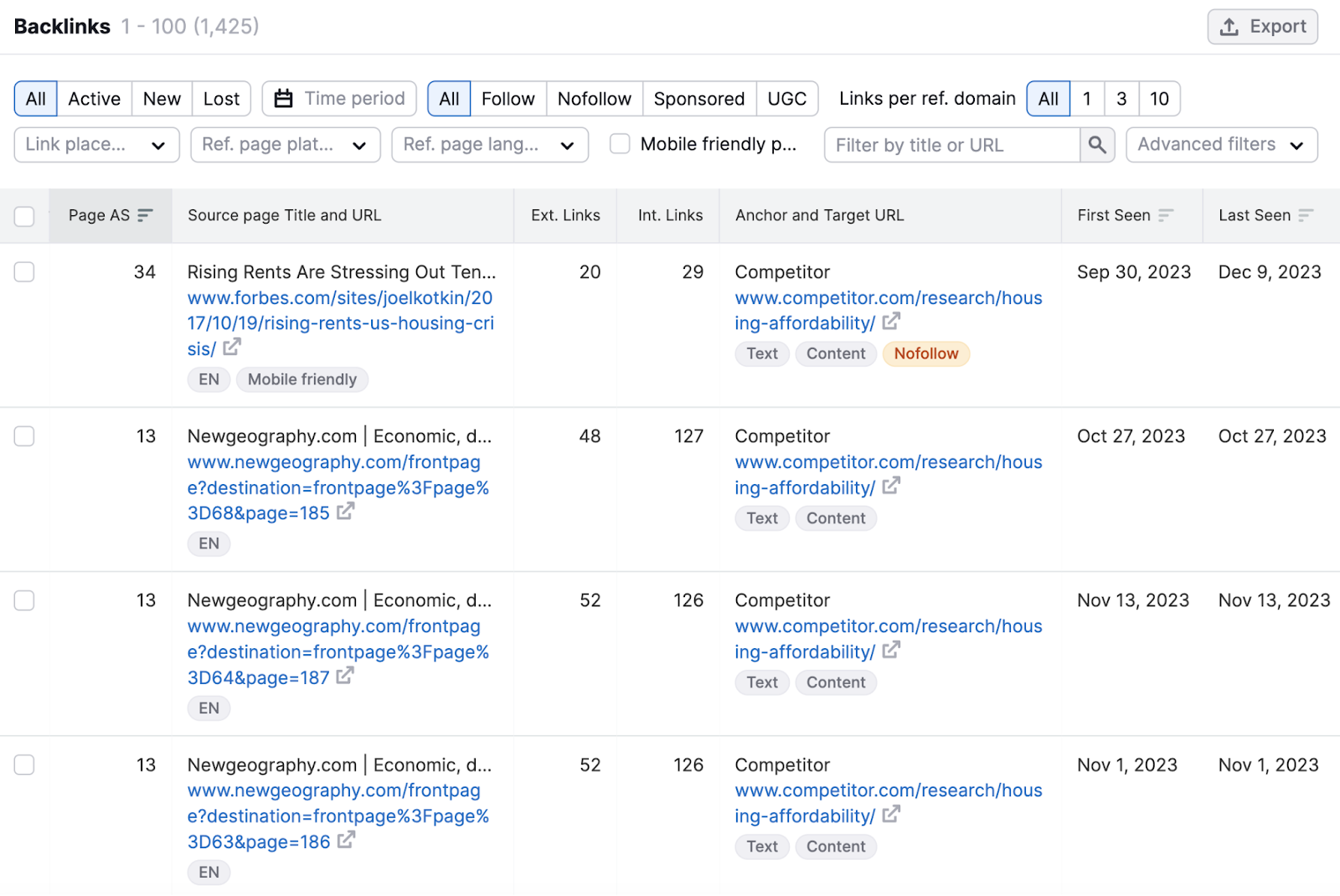
Unlinked Brand Mentions
Unlinked brand mentions are when your brand name is mentioned online but no link is provided (e.g., “Semrush” instead of “Semrush”).
In many cases, publishers are usually happy to add a link if you ask politely.
The easiest way to find unlinked brand mentions is to use a brand monitoring tool.
Simply monitor your brand name and its common misspellings.
Next, go to the Mentions report and filter for those mentions of you that don’t have a backlink.
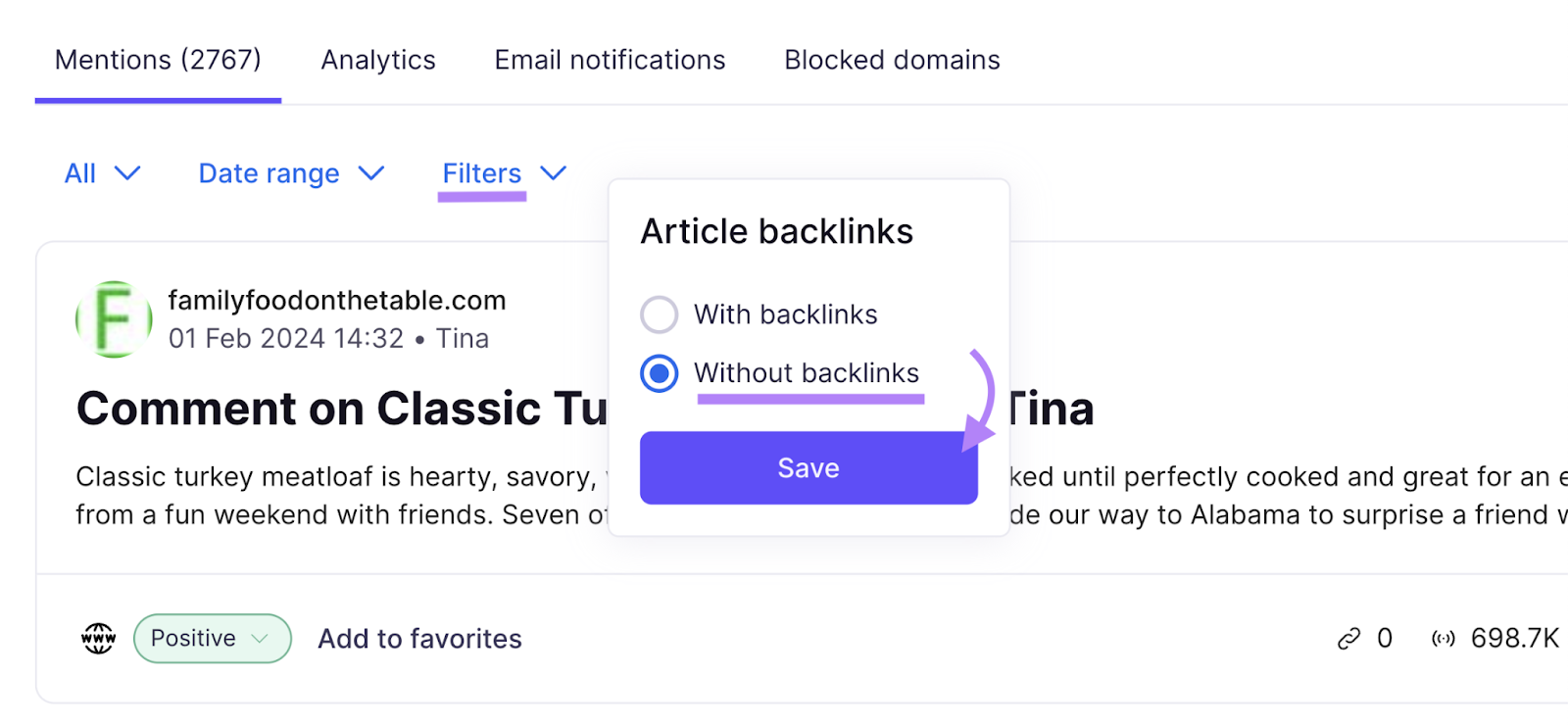
For the best chance of success, you can also filter for:
- News sites and blogs (not including discussion or social media sites)
- Mentions in the last 30 days.
- Positive articles
Next, you can scroll down through the results and find the site you want to contact.
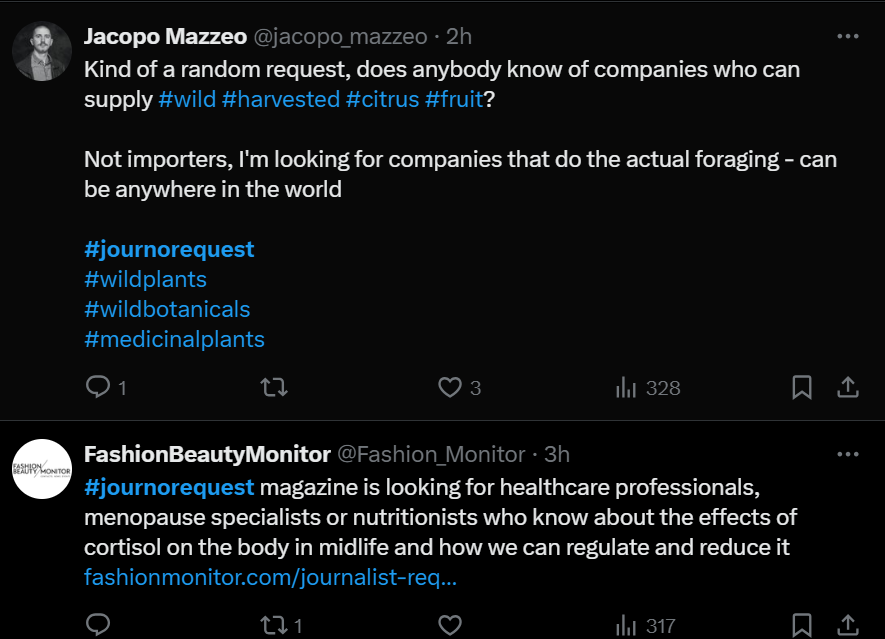
2. Content Marketing
Content marketing is a key external SEO technique.
Publishing quality content is an effective means of earning backlinks, attracting media attention, and demonstrating EEAT.
Finding ways to distribute your content to other channels can help boost off-page signals.
Let’s explore some of the best ways to share the content you create:
Digital PR
Digital PR, which refers to using PR techniques to earn backlinks, has become the preferred link building strategy for many SEO practitioners. It is an effective way to acquire a large number of authoritative links.
A great PR campaign can also:
- Boost brand awareness and search volume
- Get your business in front of your target audience
- Boost referral traffic
- Demonstrate EEAT
You can take your PR strategy to the next level by learning Brian Dean’s proven system.
Social Media
While social media doesn’t directly impact Google rankings, it can help draw more attention to your content.
The more people share your content on social media platforms, the more traffic and links to that content you’re likely to get.
Even if you don’t get links or direct visits, you’ll still attract more attention. Increased attention will lead to more brand searches and mentions.
It’s a win-win for your off-site SEO.
In today’s fast-paced digital age, managing social media can be a difficult challenge for busy business owners. However, with the advent of AI tools, maintaining an active and engaging social media presence has become easier than ever.
Semrush’s Social Content AI is a powerful tool that can help you generate and schedule high-quality social media content in minutes. You don’t have to rely on an entire content creation and design team—Social Content AI will tailor unique, branded posts to your business needs, complete with engaging images and videos.
You can also create social media content quickly with Semrush’s “Convert Link Content to Text” feature. Simply paste your URL to generate engaging post text that includes a link to your website or a snippet of the page’s content.
With Social Content AI, you can:
- Easily generate new content ideas for your website: Say goodbye to creative drought. Get inspired regularly, write compelling social media posts, and schedule them in advance.
- Create great visuals: Design unique, high-quality graphics that reflect your brand’s personality.
- Keep a consistent brand voice: Make sure your social media content reflects your brand’s personality and values.
- Manage and post easily: Create a social media calendar in advance and schedule posts automatically.
The key to social media success is consistency. By using Social Content AI, you can ensure your brand is always active and engaging with users, even when you’re busy running your business.
Check out our social media management guide for more tips on boosting your social media performance.
Influencer Marketing
Influencer marketing is about working with well-known bloggers and social media creators to promote your products or services.
It’s a great way to build your brand, enrich your content, and reach new audiences.
Influencers have a large following and can help you secure exposure on relevant platforms.
A quick and effective way to find influencers is to use influencer analytics.
For example, we can search for YouTube influencers like this:
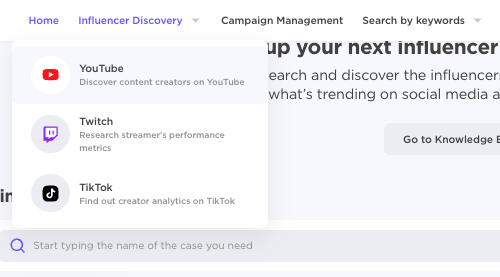
Filter by subscriber count, category, price, etc. to find the influencers who can best help your brand.
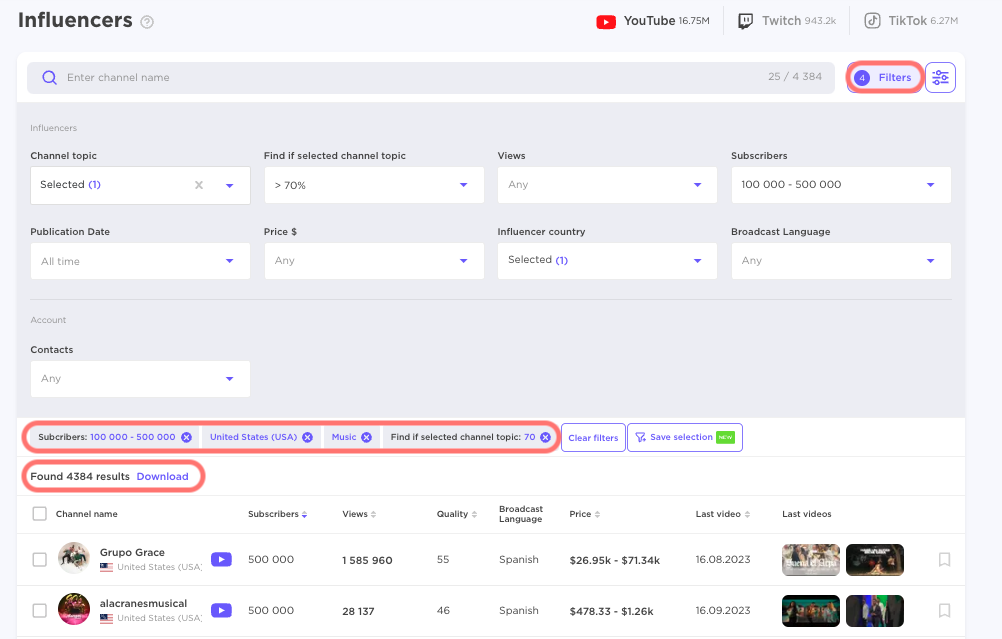
You will see a list of filtered results.
After clicking on the influencer’s image, you can view their engagement data. If this information is public, you will also find a contact email.
Guest Posting
Guest posting can expose your brand to a wider audience while generating mentions and backlinks.
If done correctly, it can help build connections. Just make sure to follow publications that are relevant to your field and focus on providing truly valuable information.
To find guest blogging opportunities that are relevant to you, try using the following search operators on Google:
- “your target keyword + this is a collaborative post”
- “your target keyword” plus “this is a guest post.”
- “your target keyword” and “guest post”
- “your target keyword” + “guest post”
- “target keyword” + “guest author”
- “your target keyword” plus “contributor”
This will show you websites that have at least one guest-authored article.
If they have accepted guest contributions before, they may also accept yours. The publisher may allow you to include a link to your website in the article.
For example, if you are writing an article about affiliate marketing, you can search for “affiliate marketing” plus “guest contribution.”
Like this:

Podcasts
Podcasts are extremely popular right now, and the trend shows no signs of slowing down.
If you’re not incorporating them into your marketing strategy, you could be missing out on a big opportunity.
Why?
Most businesses are still not into podcasting, so leveraging podcasts can be an effective way to gain a competitive advantage.
They can also allow you to reach new audiences, share your expertise, and generate awareness on other websites.
If you’re a guest on a podcast, they may link to your website during the show. Additionally, other podcasters may also find and cite your website as a source in their descriptions where relevant.
If you know of a podcast’s common topics, consider reaching out to them directly to suggest adding a link to your content in the show notes.
Content Syndication
Content syndication is the republishing of certain content on one or more websites.
Some publications prefer to syndicate content because it’s easier than constantly producing new content.
This is very helpful for you as it exposes your brand to a whole new audience.
Here are some popular content collaboration platforms:
- Medium
- Outbrain
- Taboola
- Business 2 Community
- Quuu
You can look for websites in your industry and reach out to them to co-publish your content.
Be careful when you publish content.
Google says it will always show the version we think is best for users in each search, which may not necessarily be the version you like. This means that the version published on the co-publishing site may outrank the version published on your own site.
To avoid this, make sure the syndicated version of your article links to your original version. Also, set up canonical tags correctly – this involves adding some HTML code to your website to indicate which version is the main version.
Forums
For SEO, removing links from forums will not help you rank higher on Google.
Forums allow you to participate in discussions related to your expertise. Treat yourself as an expert and help new audiences understand your field.
There are few other platforms that allow you to communicate openly with potential customers who already have questions about your products.
Therefore, it is a great starting point for building relationships and trust. If community members want more information, you can share relevant content that interests them.
Reddit and Quora are two major large platforms, but forums related to your industry can also work well.
For example, Google Search Center provides community assistance.
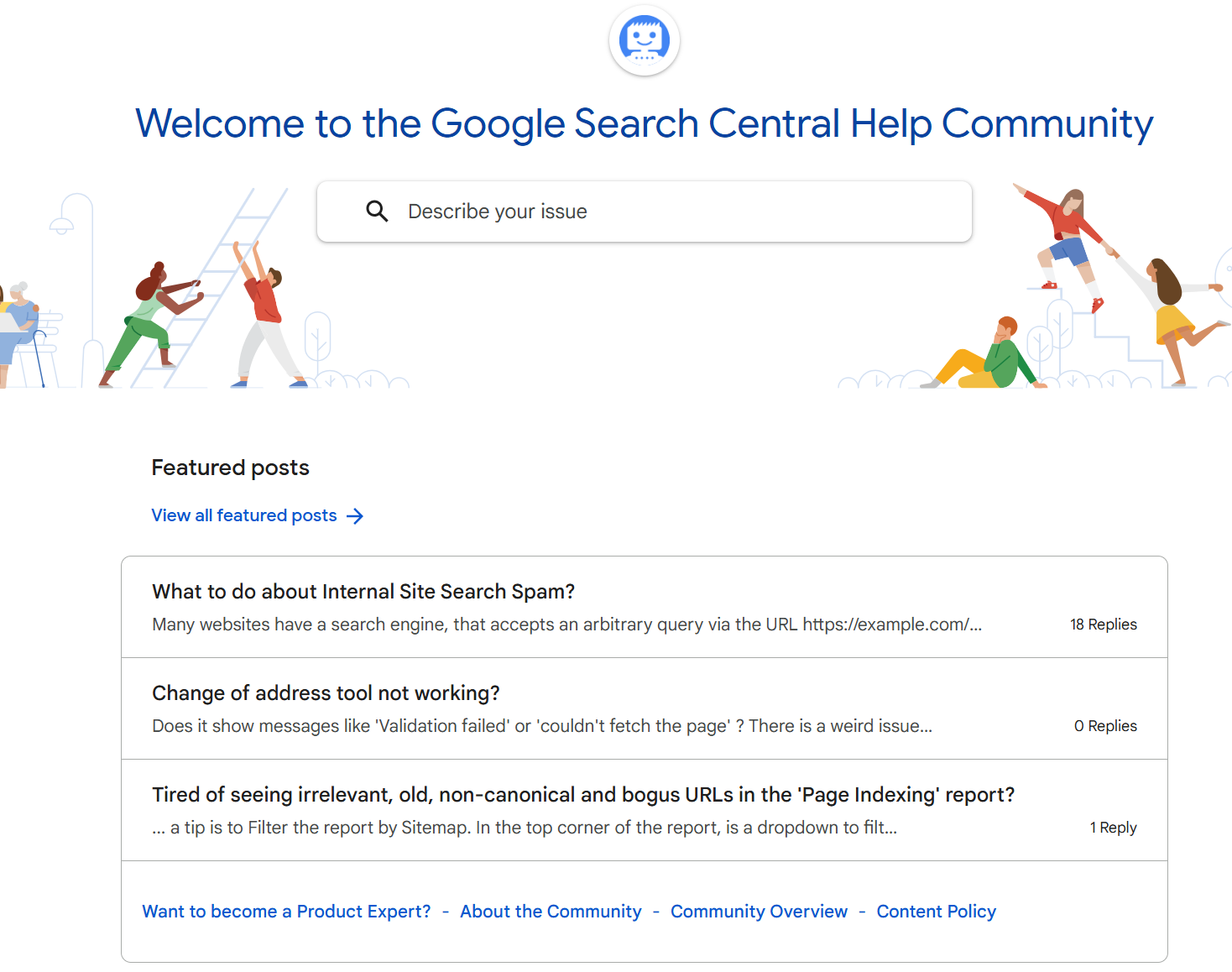
3. Local SEO
Local SEO (SEO) is the process of increasing local traffic, awareness, and branding for your business by improving your online presence.
Let’s discuss two off-site SEO techniques that local businesses should be using:
Google Business Profile Management
Google Business Profile (GBP) is a free tool that helps you manage how your business appears on Google.
Since this happens outside of your website, optimizing your Google Business Profile becomes an important off-site SEO strategy.
In fact, it’s an important local SEO ranking factor.
This can increase your site’s visibility in high-value locations on Google search results pages.
Like our example map pack “Bars near me”:
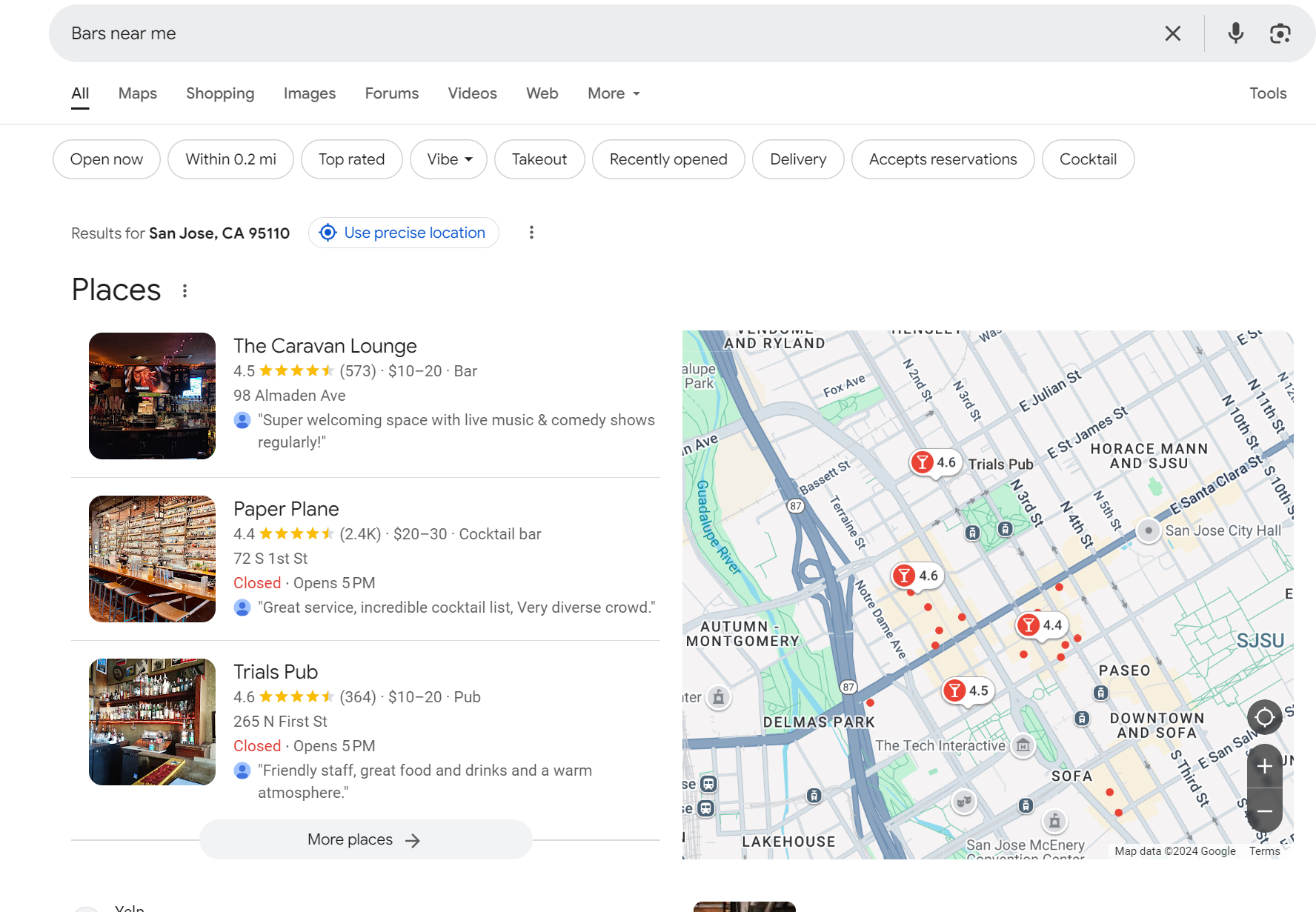
Here is a Google Business listing for a business:
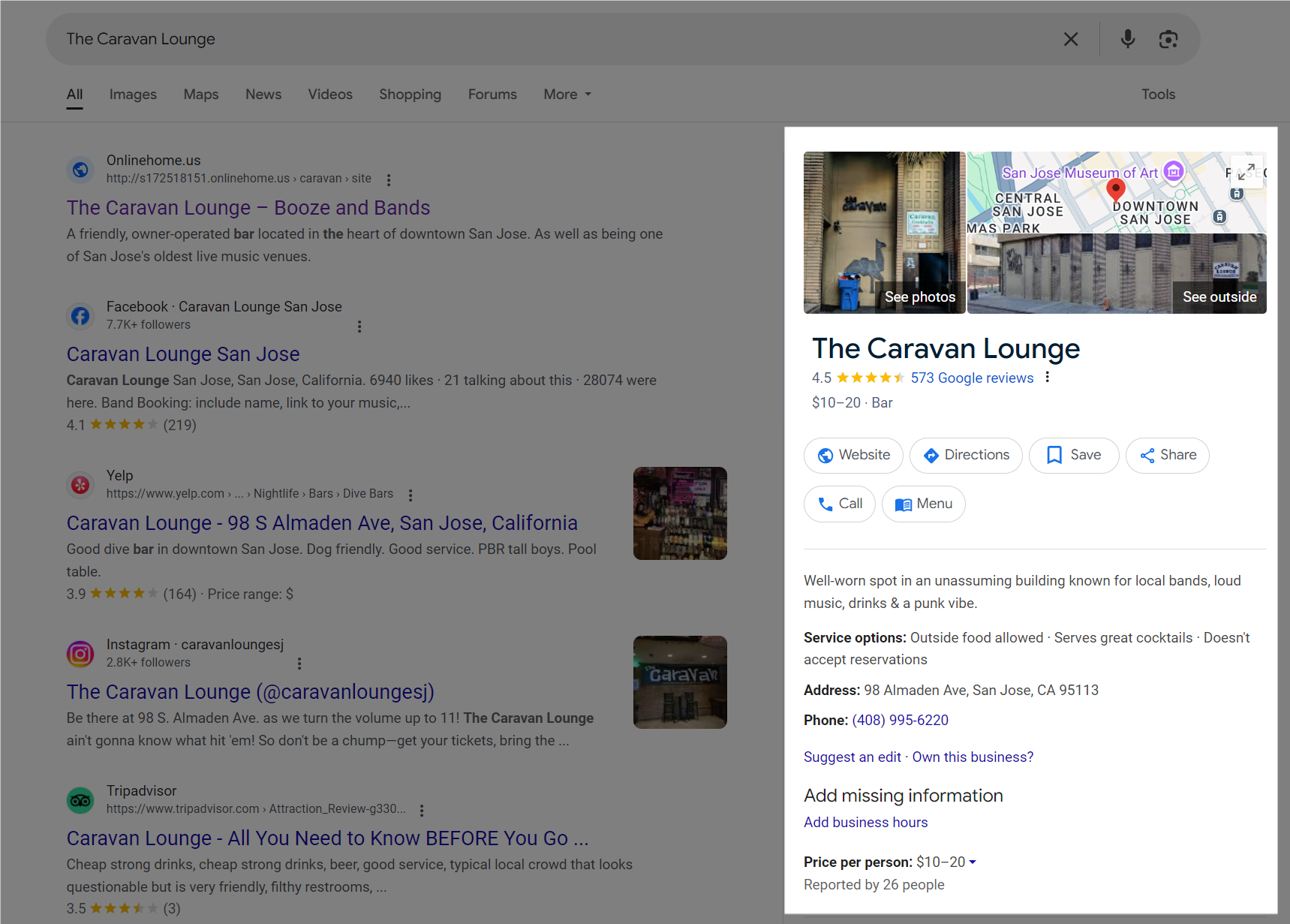
Here are some tips for Google Business Profiles:
- Fill out your contact information carefully.
- Reply to all reviews.
- Publish content (including images and videos) regularly.
If you want to learn more about this, check out our guide to marketing with Google Maps.
NAP SEO
NAP SEO is the process of accurately displaying your business name, address, and phone number in online listings.
These citations typically appear in business directories, social media profiles, and review sites, but can also appear on a variety of other sites.
Like this:

NAP citations are important because Google relies on them to verify that all of your business information is accurate.
Therefore, an important factor in successful citations is consistency. Inconsistent citations can confuse readers and search engines.
You need to take the time to ensure that all of your NAP information is consistent.
4. Press Releases (PR)
Public relations (press releases) is an effective off-site SEO strategy that aims to produce and publish news announcements or information related to your business to the media and online platforms.
The purpose of a press release is to attract media attention to your company, products, services, events or major developments related to your business in order to generate public interest.
If executed effectively, PR activities can bring multiple benefits to your off-site SEO strategy, such as increasing awareness and brand exposure, providing high-quality backlinks, enhancing reputation and credibility, and increasing website traffic.
To effectively use PR for off-site SEO, consider optimizing the SEO of your press releases by integrating relevant keywords and linking anchor text to your website or specific landing pages to maximize its effectiveness.
Make sure your press releases are search engine optimized to increase their visibility and findability.
5. Reviews
Reviews build trust in your business.
In fact, reviews are one of the most important factors Google uses to assess your website’s reputation.
They are especially critical for local SEO.
Google recommends that you respond to all reviews, whether they are positive or negative. Doing so shows that you value your customers’ business and feedback.
You can quickly find and respond to reviews through review management, which is part of listing management.
Once you configure the tool, you’ll see a dashboard showing all your reviews. To respond, simply enter your review in the tab and click the “Reply” button.
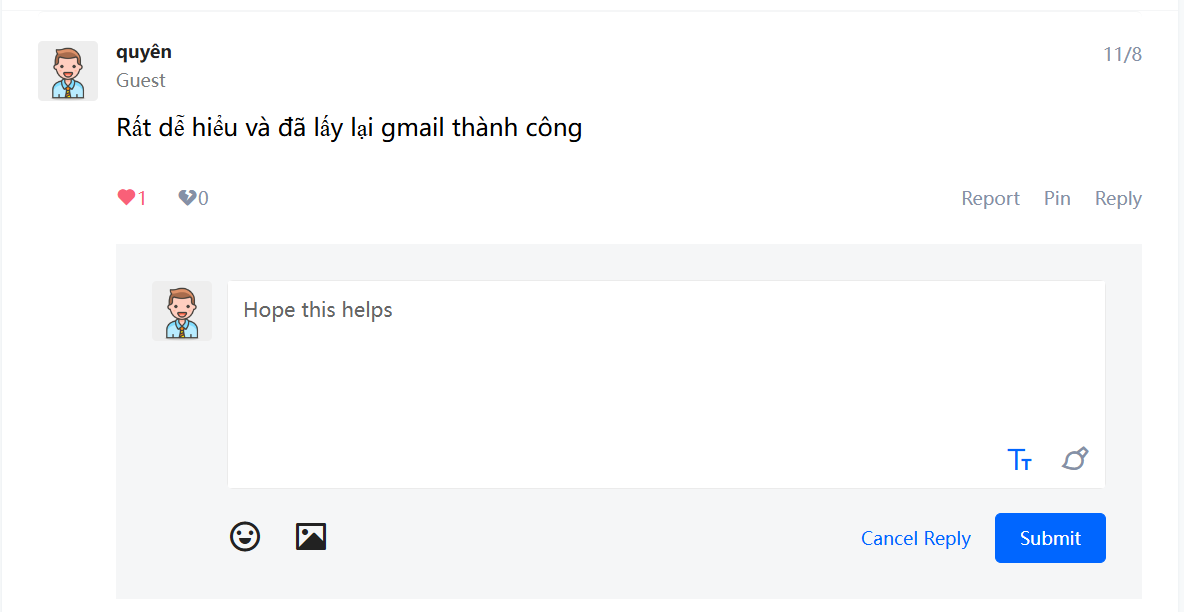
Here are some tips for writing online reviews:
- Ask your customers what they think.
- Build trust by responding to every review.
- Do not accept or offer money in exchange for reviews.
6. Events
Events not only attract audiences, but they also generate revenue by creating buzz for your business.
For example, you can get mentions of your brand through social media during the promotion of your event. If attendees write post-event summaries, your brand may also be mentioned on other websites.
Your event landing page can also attract external links if people are interested in it, speakers want to promote it, or influencers want to share it with their audience.
Events may require more effort to get going, but this kind of buzz is hard to get in other ways. At the same time, they are also a good way to get quality PR coverage.
For more information, check out our guide to experiential marketing.
6 Factors That Affect the Value of Off-Site SEO Links
You should also consider the fairness, value, and authority of the link transfer.
Although you can get dozens of low-quality links from spammy or unreliable websites, these links will not help your business rank higher in search results. Therefore, it is very important to focus your external SEO link building efforts on credible websites that have good link value.
The six factors that affect the fairness of link transfer are:
- The text used to link to your website
- The freshness or timeliness of the link to your website
- The number of links included in the linking page
- The relevance between the topic of the linking website and the topic of your website.
- The reliability of the website link
- The authority of the website and page links
If you use tools such as Ahrefs and Semrush, you can analyze the potential link value of your website.
How to Prevent Google Penalties for Unnatural Links
Backlinks are indeed critical, especially if you want to maintain your website’s ranking. However, when discussing off-site SEO, we cannot ignore Google’s penalties and the issue of unnatural links.
In fact, links have a huge impact on search performance, both positively and negatively.
If you ask professional bloggers what they think is the most important factor in search rankings, many will answer “links.”
Top brands, small businesses, and blog owners all take link building seriously. According to MarketingSherpa’s 2012 Search Marketing Benchmark Report, 59% of companies have successfully built external links.
You should try to avoid being penalized by Google, as the recovery process is often very difficult.
Many of the factors that once attracted Google’s attention, such as links from high-authority websites, no longer have as much influence.
Google now pays more attention to user experience, user intent, and high-quality content. The focus is no longer on the search terms people use, but the purpose for which they use those specific words.
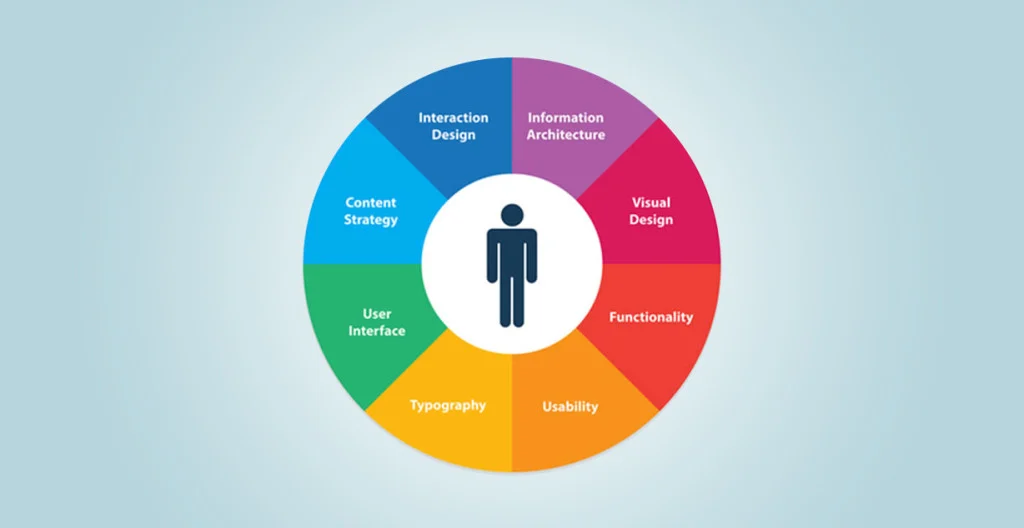
Comprehensive backlink analysis can help you identify which links are beneficial or harmful to your site, and how to avoid being discovered by Google’s penalties.
The search engine giant has yet to provide the SEO community with any clear guidance on safety steps. However, there are steps you can take to protect your site and avoid penalties.
These great practices helped me drive over 700,000 blog visitors to QuickSprout without any penalties for unnatural links and over-optimized anchor text.
1. Create Content For Users And Optimize It
You probably already know what this means. The key is, do you put users first?
To truly put users first, you shouldn’t mention keywords too often in your posts, especially when it doesn’t seem natural to do so.
Being user-centric is more than just applying keywords. Sometimes, you may not be directly focused on certain keywords, but your content seems too commercial.
Users generally don’t like to be sold. Instead, support them by providing valuable content. Try to integrate data in your blog posts and use visuals to make your point clearer.
If you help them with great content, they will naturally want to know more about you.
2. Diversify Your Anchor Text
After completing a comprehensive backlink analysis and understanding the sources of your links, you should next focus on enriching your anchor text.
Diversifying anchor text means using different keyword phrases, brand names, and generic terms so that Google will see your links as naturally generated rather than artificially manipulated.
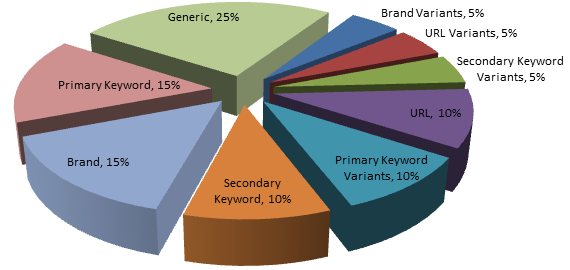
After all, if you didn’t earn your links through any shady means, then your links shouldn’t all have exact keyword matches in their anchor text, right?
Relevance is the most important factor to consider when diversifying your anchor text. Google evaluates your links based on the topic of the referring page and how it aligns with your topic.
You should understand that you can’t control where your links come from. Anyone can share your content and link to it in any way they want.
Since you can’t control where your anchor text or links come from, it’s recommended that you use your brand name as anchor text more often.
If you’re a social media expert and participate in interviews with automotive blogs, it’s recommended that you use your brand name as anchor text.
This is because the topics of cars and social media are not directly related. At the same time, Google uses the anchor text of the external links on your page to evaluate the quality, relevance, and usefulness of these links.
Finally, make sure you get links from high-quality websites, avoid links from low-quality, weak pages, and add some nofollow links in your link profile to make it look more natural. Also, publish new content regularly to increase your brand’s exposure.
Off-site SEO Conclusion
If you are looking to improve your search engine rankings, now is the best time to reach out to other industry bloggers and website owners, and get off your own website to network.
Understand that the main goal of Google Penguin and other algorithm updates is not to lack a large number of inbound links in the search results.
You should always use white hat link building strategies to improve your external optimization results.
However, while working hard to build and acquire links, you also need to prepare your website to receive high-quality link flow. Make sure your website is clearly structured and easy to navigate.
When it comes to improving the content experience, it is all about answering user questions. Start by identifying the questions that your ideal customer is concerned about. These questions can be found on Quora, Twitter, and other social media platforms. Producing quality content is an important SEO strategy that cannot be ignored.
The bottom line is that SEO is not a short-term marketing strategy. You need to understand that the efforts you make today will pay off in the future to improve your search engine rankings and help you achieve the success you expect.
The bottom line is, be persistent and patient, and you will gradually climb to the top of Google search results.
What other off-site SEO optimization strategies do you think are essential to improving your organic search rankings? How do you see the relationship between SEO and social networking?
What Is Off-Page SEO?
What is off-page SEO? Off-page SEO refers to activities performed outside of a website to improve its search engine rankings. Common off-page SEO practices include building external links, promoting branded searches, and increasing engagement and sharing on social media platforms.
What Is On-Page SEO?
On-page SEO (also known as “on-page SEO”) refers to the optimization of content performed to improve the performance of web pages with search engines and users. Common on-page SEO methods include optimizing title tags, body content, internal links, URLs, and other factors that influence rankings.
How To Do On-Page SEO?
8 on-page SEO tips for your website:
1. Create unique and useful content.
2. Target keywords strategically.
3. Write title tags that include keywords.
4. Write click-worthy meta descriptions.
5. Use headings and subheadings to effectively organize your page content.
6. Optimize URLs.
7. Add internal links.
8. Insert external links.
Why On-Page SEO Is Important?
The goal of on-page SEO is to increase organic traffic to your website by improving your ranking in search engines. A more complete on-page SEO strategy will cover everything from search intent, target keywords, internal links, to quality content.
Which Of These Is Part Of Off-Page SEO?
Off-page SEO focuses on relevant activities outside of your website to improve search engine rankings. These activities include building backlinks, engaging in social media, and getting brand mentions. Backlinks from reliable websites can significantly enhance your domain authority.

